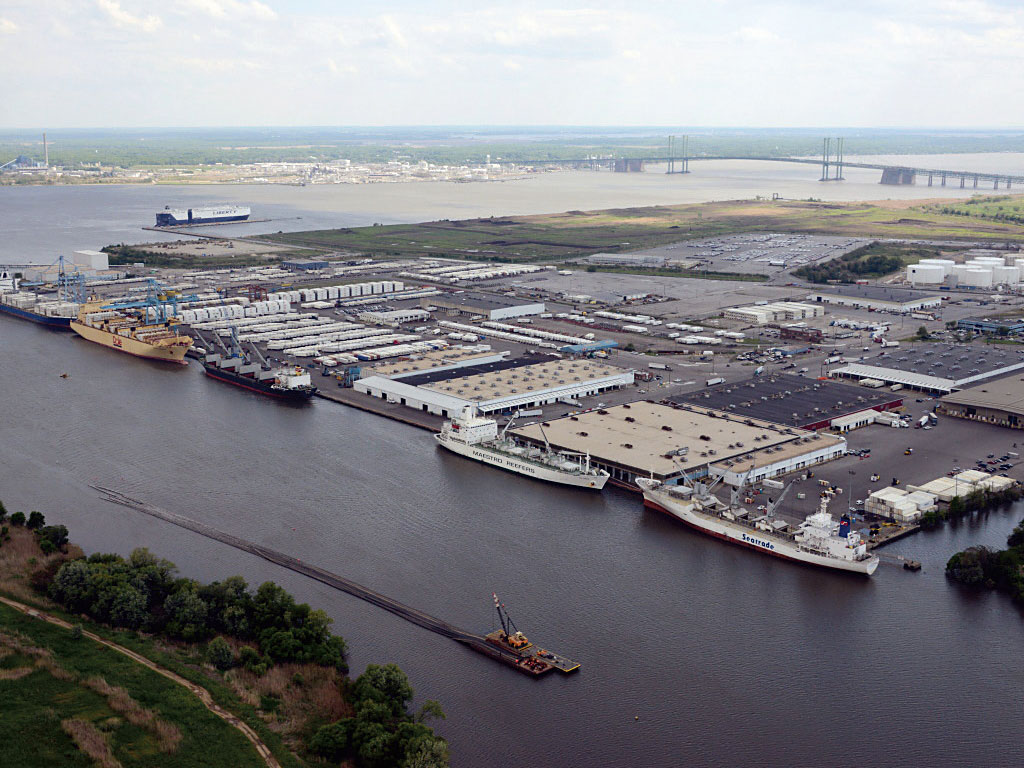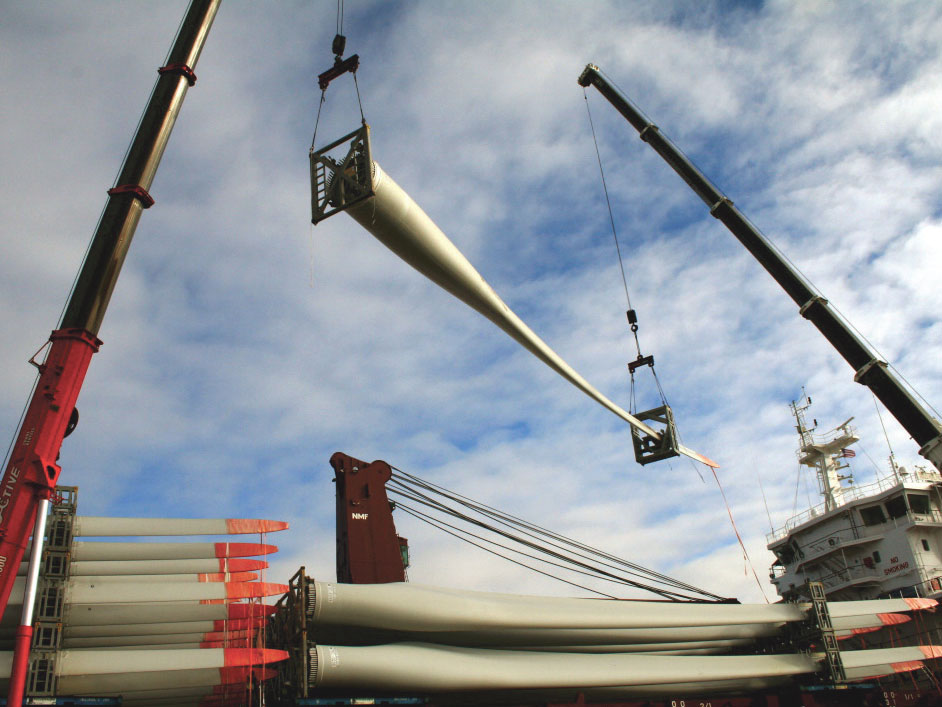In its second year operating Delaware’s Port of Wilmington, GT USA Wilmington remains focused on maximizing capability of existing port facilities and advancing ambitious plans for development of an all-new, $500 million-plus upriver terminal.
“This was a very good first year for us in terms of hitting the ground running, transitioning all legacy customers over to Gulftainer,” Eric Casey, chief executive officer of GT USA Wilmington, told AJOT. “None left the port during the transition. They all stayed. And we received some new customers as well.”

The diverse port maintains its “Top Banana” role as North America’s No. 1 banana import port, while dynamic roll-on/roll-off operations handle Chrysler, General Motors and Ford exports, shipments of used vehicles to West Africa and imports of Fiat and Jeep Chrysler vehicles.
“It was a good Year One, with all commodities showing growth,” Casey said, declining to provide detailed figures. “It was through the hard work, the dedication and expertise of the team that transitioned to Gulftainer USA Wilmington that were here – legacy people – and also some new people we brought onboard who really just immediately picked up and ran with it.”
Casey cited in particular Mike Hall, GT USA Wilmington’s chief operating officer; Greg Iannarelli, chief counsel; Dave Harriss, chief commercial officer; and Kathryn Bradley, group commercial director.
GT USA Wilmington, an arm of United Arab Emirates-based Gulftainer, entered into a 50-year concession agreement to assume Delaware port operations in October 2018. That includes the existing facilities – at the confluence of the Christina and Delaware rivers – where improvements are being completed this year, as well as development of a new terminal on a 112-acre waterfront site that formerly housed the Chemours/DuPont titanium dioxide manufacturing plant at Edgemoor.
By the end of the first half of 2020, GT USA Wilmington will have invested $100 million in upgrades of the current Port of Wilmington facilities, according to Casey. That work has thus far included berth and warehouse improvements, heightened food safety certifications, addition of a trio of 45-ton-capacity Konecranes reachstackers and other new equipment, and finalization of designs for new dry and refrigerated warehousing and yard densification. The port’s first five new rubber-tired gantries are to arrive in May.
Also, implementation of an integrated port operating system, featuring terminal-wide wireless communications and comprehensive real-time tracking, swiftly delivered a 38 percent boost in productivity, said Casey, who previously was vice president at Virginia International Terminals Inc.
“There’s been a substantial increase in productivity,” he said, sharing credit with enthusiastically collaborative labor, including that of International Longshoremen’s Association locals, various AFL-CIO trades and Teamsters.

“Because of the timeliness of the data,” Casey said, “it really makes a difference in today’s world. Having the data readily available and transparent – not just to us running the port but also being able to translate that picture directly to our customers to give them real-time access to look at the exact same picture we’re looking at – significantly reduced any kind of delay in being able to access and manage any issues and really increased our flow.
“We’ve completely transitioned this port, and we’re going to do it within two years,” Casey added.
Perhaps even more impressively, GT USA Wilmington is earmarking $500 million for development of the Edgemoor site, where total investment, including for dredging, is projected to reach about $600 million.
“We have not gone out and set aside that capital yet,” Casey said of the Edgemoor endeavor. “That’s just what our planning is. But we are already looking at the permitting and the requirements for us to make sure that we are prepared to start Edgemoor when we meet our triggers.”
The triggers are volume-based, he said, noting that the port has already passed two-thirds of the way to its volume goal for existing facilities. Enhancements at the current port site, including more refrigerated and dry warehousing, should be done in 2020, while the first phase at Edgemoor is targeted for completion by the end of 2023.
Regarding Edgemoor, Casey said, “We are moving forward with our engineering, design and planning, and we are still on schedule to meet that timeline for phase one in late 2023.”
Casey said he can’t help but be pleased with the progress – and the team effort bringing it to fruition.
“It’s been really exciting,” he said, “because, if you look at it, this has been a really unique experience, coming in and basically doing a startup on top of an existing business. I say that because the existing port direction that was here through DSPC [Diamond State Port Corp.] was acting as a landlord, and then we came in, and we are now not only covering that function but we’re also the terminal operator.
“So,” Casey went on to say, “we had to build that terminal-operating structure from scratch here while maintaining all 34 legacy customers 24/7/365 and being able to provide new terminal services for them while implementing a new operating system, while doing construction to improve all of our berths, while fixing our warehouses and getting our food certifications up and above the norm that was here, and while planning on doing an engineering program that’s totally going to completely redesign the port within 18 months.
“It’s been an exciting period,” he said, “and the team has worked without flaw. They have not missed a beat. They jumped right in, rolled up their sleeves and took off on this thing, and they have actually welcomed the challenge.
“It’s been really exciting to watch people grow and develop and transition to new functions within the port and accept the challenge of trying something new and not only succeeding at it but coming back and giving real-time after-action reports to say, ‘Hey, this is what we found out,’ and then brainstorming to do it better the next time,” Casey said.
“It’s been a really, really great growth period for us in Year One,” he said. “We’re looking at some more growth, some exciting new opportunities in 2020. We’re looking for new lines of business. We’re looking to bring new lines of business to the East Coast of the United States and also to be a gateway into the United States, the Midwest and throughout, through the Port of Wilmington and through the Delaware River. We’re really trying to make it grow.
“There’s a lot to offer here,” Casey said, “and, with us moving forward and with our designs on Edgemoor, the future looks very bright in this space, and it’s only going to get better over the next three to four years.”




